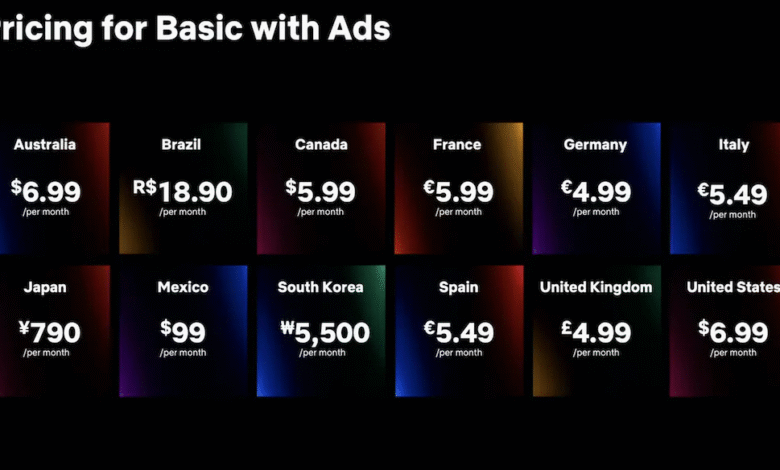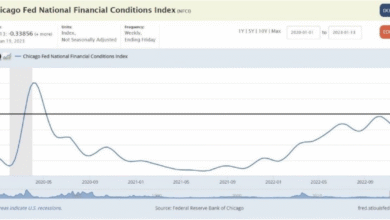Netflix Ad-Supported Tier Hits 94 Million Active Users

Netflix’s ad-supported tier has taken the streaming landscape by storm, recently boasting an impressive 94 million monthly active users, a substantial gain of over 20 million since November. This innovative streaming service advertisement has resonated particularly well with millennials, who are increasingly turning to cost-effective viewing options. At just $7.99 a month, this tier provides a budget-friendly entry point for audiences seeking high-quality entertainment without breaking the bank. Emphasizing Netflix’s strong pivot towards ad-supported streaming, the company’s revenue growth has been bolstered by its ability to capture younger demographics more effectively than traditional broadcast or cable networks. With its ad-supported model, Netflix not only meets the evolving millennial viewing habits but also solidifies its position in a competitive market, ensuring sustainable growth in an ever-changing entertainment landscape.
The recent success of Netflix’s budget-friendly subscription option has highlighted a significant shift in how viewers consume content today. This latest plan, characterized by its incorporation of advertisements, caters to a wide audience eager for accessible entertainment without the premium price tag. As the streaming service landscape evolves, many providers are now exploring ad-supported formats to broaden their reach and appeal to budget-conscious consumers. With a notable influx of users, including a substantial percentage of younger viewers, Netflix’s latest offering aligns seamlessly with the current trends in viewing preferences. This strategy is not only attracting new subscribers but also reshaping the future dynamics of streaming services, marking a pivotal moment for the industry.
Netflix’s Ad-Supported Tier Becomes a Hit
Netflix’s decision to introduce an ad-supported tier has been a significant boon for its user base, now boasting 94 million monthly active users. This represents an impressive increase of over 20 million in a short span, underscoring the growing appeal of budget-friendly streaming options. With a monthly price point of $7.99, it’s clear that affordability is a key factor driving user engagement, particularly among millennials seeking value in their entertainment choices.
The ad-supported model aligns well with current viewing habits, especially among younger audiences. Netflix has harnessed the power of advertising not just to enhance its revenue growth but also to cater to the needs of a demographic that prefers lower subscription costs. As traditional cable networks face declining viewership, Netflix’s ability to attract more 18- to 34-year-olds than any U.S. broadcast or cable network is particularly noteworthy, indicating a shift in how modern viewers engage with content.
Understanding Millennial Viewing Habits
Millennials represent a substantial segment of the streaming audience, and Netflix’s ad-supported tier has tapped into their viewing habits. This demographic is keen on discovering cost-effective streaming solutions that do not compromise on content diversity or quality. The growth in monthly active users within this group emphasizes their preference for ad-supported streaming as a viable alternative to higher-priced subscription options, particularly as they navigate economic uncertainties.
Moreover, millennials’ consumption patterns are increasingly tied to platforms that offer tailored viewing experiences. Netflix has recognized this trend by implementing a strategy that prioritizes engaging advertisements and meaningful content. Interestingly, it’s reported that viewers engage with mid-roll ads with the same level of attention as the shows themselves, which bodes well for advertisers and indicates the potential for lucrative partnerships.
The Impact of Ads on Netflix Revenue Growth
Navigating the competitive streaming landscape is paramount for Netflix, especially as it seeks to bolster revenue growth through its ad-supported tier. The introduction of advertisements has allowed Netflix to create new revenue streams, essential for maintaining its market leadership amidst rising competition. By leveraging data analytics and viewer feedback, Netflix can optimize its advertising strategies to enhance viewer satisfaction and ultimately boost its revenue.
The shift towards ad-supported streaming not only aids in financial growth but also paves the way for more varied content offerings. Advertisers are increasingly recognizing the value of the Netflix platform, as its user base continues to expand. This symbiotic relationship between Netflix, its users, and advertisers reinforces a sustainable model that can drive future growth and innovation in streaming services.
Ad-Supported Streaming: A Growing Trend
The trend of ad-supported streaming is rapidly gaining traction in the industry, with Netflix leading the charge. The success of its affordable subscription tier indicates a larger shift in consumer preferences towards more flexible viewing options. As viewers become more accustomed to advertisements interrupting their content, it is evident that they are willing to adapt for the sake of lower costs, showcasing a significant transition in the way audiences interact with media.
This growing acceptance of ad-supported content highlights an essential transformation in the streaming landscape. Competitors are closely observing Netflix’s approach, with many considering similar initiatives to capitalize on the market’s evolving needs. As more platforms adopt advertisement models, the implications for traditional cable networks could be profound, as they may struggle to retain viewers who are shifting towards ad-supported streaming services.
Comparing Netflix with Other Streaming Services
In the realm of streaming services, Netflix has distinguished itself with its ad-supported tier gaining remarkable traction among monthly active users. Unlike other platforms that predominantly focus on larger subscription fees, Netflix’s strategy to incorporate ads while maintaining viewer engagement sets a precedent in the industry. Examining how Netflix attracts more young adults compared to traditional networks provides insight into the evolving expectations of viewers.
Other streaming services are now looking at Netflix’s model, assessing how effective ads are at holding users’ attention and influencing their viewing habits. For instance, if Netflix can demonstrate the ability to maintain user engagement during ad breaks, it could prompt competitors to adopt similar frameworks in order to remain relevant and financially viable in an increasingly crowded market.
Reaching a Diverse Audience with Ads
The ad-supported tier of Netflix is not solely about attracting millennials; it also provides an opportunity to reach a diverse array of viewers within the U.S. market. By strategically placing advertisements tailored to various demographics, Netflix maximizes its potential to capture audiences who may have previously been hesitant to subscribe due to cost. This targeted approach is crucial in maintaining a competitive edge over other streaming services.
With its robust 94 million monthly active users, the platform is proving that advertisements can successfully enhance viewer experience by aligning them with interests and preferences. The engagement data backs up Netflix’s approach, where users show willingness to interact with ads as a part of their viewing experience, ultimately creating a diverse ecosystem that benefits advertisers through targeted campaigns.
The Future of Streaming and Advertising
As we look to the future of streaming, the combination of original content and strategic ad placements is likely to define successful models. Netflix’s ad-supported tier sets a clear example of how streaming giants can navigate evolving consumer behavior while satisfying advertisers’ demands for visibility and engagement. This approach may signal a new chapter for the streaming industry, where ad revenues could rival subscription income, offering a dual avenue for growth.
Furthermore, innovations in advertising technology and analytics will continue to play a significant role in shaping viewer experiences and expectations. As Netflix continues to refine its ad strategies, viewers can anticipate a more personalized experience that seamlessly blends entertaining content with relevant advertisements. This balance is crucial for the retention of current users while attracting new subscribers to the platform.
The Economic Impact of Netflix’s Ad-Supported Tier
The economic implications of Netflix’s ad-supported tier extend beyond its immediate revenue figures. By capturing the attention of 94 million monthly active users, Netflix is playing a pivotal role in reshaping the advertising landscape within the streaming sector. It provides a model that could inspire other streaming services to explore similar routes to profitability, ultimately benefiting the broader economy as digital advertising gains importance.
Moreover, the relationship established between advertisers and streaming platforms may lead to increased competition and innovation in the advertising domain. As Netflix continues to solidify its standing as a leader with successful user engagement and audience targeting, it’s likely that many companies will seek partnerships, bringing new opportunities for growth and enhanced viewer engagement—transforming how advertisements are perceived in an entertainment context.
Adjusting Marketing Strategies for a New Generation
As millennial viewing habits evolve, Netflix has effectively adjusted its marketing strategies to maintain relevance among this crucial demographic. The introduction of an ad-supported tier at a lower price point has resonated well with users who prefer flexibility in their streaming options. By understanding the nuances of modern consumer behavior, Netflix is positioning itself as a forward-thinking platform that values the needs of its audience.
In addition to appealing to cost-conscious viewers, Netflix’s ad-supported tier also emphasizes a shift toward more diverse content that caters to varied interests. Marketers targeting younger audiences are now equipped with data and insights from Netflix, allowing for campaigns that resonate on a personal level. This strategic alignment will undoubtedly influence the trajectory of how streaming services communicate with users in the future.
Frequently Asked Questions
What is the Netflix ad-supported tier and how does it affect Netflix monthly active users?
The Netflix ad-supported tier, launched in November 2022, offers a subscription at a lower price of $7.99 per month, featuring advertisements. As of May 2025, this tier has attracted 94 million monthly active users, showing significant growth in viewership compared to prior figures, contributing to Netflix’s overall revenue growth.
How does the Netflix ad-supported streaming model compare to traditional cable networks?
Netflix’s ad-supported streaming model reaches more individuals aged 18 to 34 than any broadcast or cable network in the U.S., making it particularly appealing for advertisers aiming to connect with millennial viewing habits. This model enhances Netflix’s appeal to advertisers while also boosting its monthly active user count.
Can the addition of ad-supported streaming increase Netflix revenue growth?
Yes, the introduction of the ad-supported tier is designed to drive Netflix revenue growth by capturing new audiences who are more price-sensitive. The success of this model is evident, with 94 million monthly active users engaging with advertisements on the platform, thus providing additional income for Netflix.
What impact do advertisements have on the Netflix viewing experience in the ad-supported tier?
In the Netflix ad-supported tier, users have reported that they pay similar levels of attention to mid-roll ads as they do to the shows and movies themselves. This suggests that advertisements are integrated in a way that maintains user engagement, benefiting both Netflix and advertisers.
Why are millennial viewing habits important to Netflix’s ad-supported tier strategy?
Millennial viewing habits are crucial for Netflix’s ad-supported tier strategy because this demographic is heavily represented in the 18 to 34 age group. By targeting this audience, Netflix can maximize engagement and advertising effectiveness, making their streaming service more attractive to advertisers.
| Key Points | Details |
|---|---|
| Total Monthly Active Users | 94 million, up by over 20 million since November |
| Target Demographic | Reaches more individuals aged 18 to 34 than any broadcast or cable network in the U.S. |
| Pricing | $7.99 monthly for the ad-supported tier, compared to $17.99 for the cheapest ad-free plan |
| Company Statements | Members pay the same attention to ads as they do to shows and movies, indicating high engagement |
Summary
The Netflix ad-supported tier has become a significant player in the streaming industry, boasting 94 million monthly active users and showing a promising increase of 20 million users since its last report. By targeting the younger demographic and offering a competitive price, Netflix is effectively carving out a space in the ad-supported streaming market.



